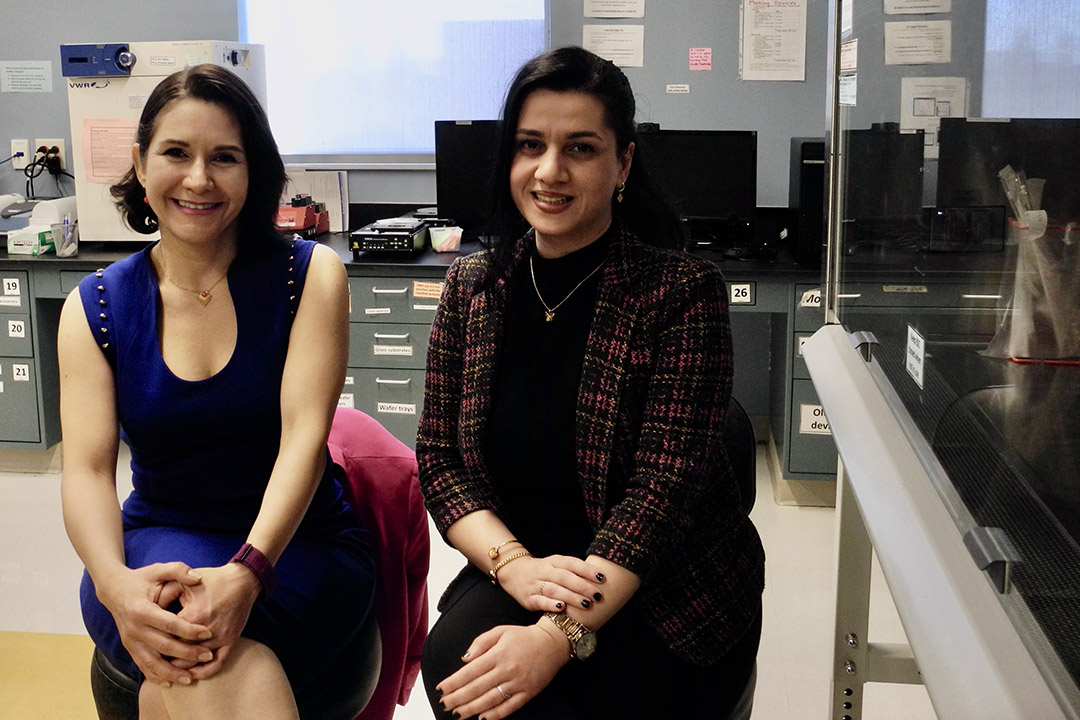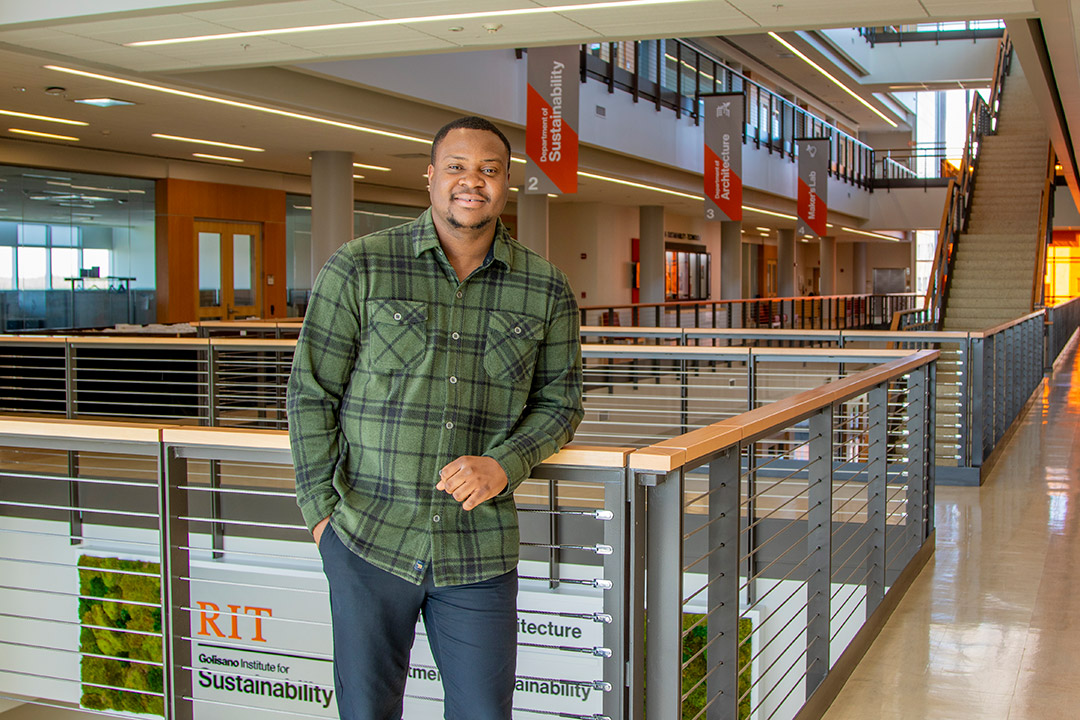Alaleh Vaghef-Koodehi’s work with biomedical engineering professor Blanca Lapizco-Encinas advances analysis of carcinomas and cell resistance to antibiotics

Provided
Blanca Lapizco-Encinas, left, and doctoral candidate Alaleh Vaghef-Koodehi developed a unique cell separation technique to better assess antibiotic resistance.
Using a non-traditional, micro-organism separation method, researchers at Rochester Institute of Technology discovered a faster technique that can be used to distinguish cells that are resistant to antibiotics or cancer.
Alaleh Vaghef-Koodehi, a doctoral candidate in RIT’s Kate Gleason College of Engineering, led elements of the work to improve lab-on-chip devices, specifically an insulator-based electrokinetic system, a method that manipulates charged particles, such as microorganisms, through applied electrical capabilities.
Lab-on-chip devices are small instruments that can analyze several biological samples through chemical and electrical methods. Their small size allows for portability, and continued advancements like the new work by Vaghef-Koodehi and RIT biomedical engineering faculty-researcher Blanca Lapizco-Encinas is a promising diagnostic tool for clinicians.
Lapizco-Encinas and Vaghef-Koodehi have been at the forefront of improving lab-on-chip devices. Their most recent paper was detailed in the journal Electrophoresis. The article “Dielectrophoresis in Carcinoma Diagnosis: Recent Developments and Applications,” is one of several the researchers published about how lab-on-chip devices are becoming more sophisticated.
The process, not widely researched until recently, is being seen as a reliable means to detect slight variations in microorganisms, which can improve response to diseases.
“We hope lab-on-chip devices will be as common as things like pregnancy tests,” said Vaghef-Koodehi. “We are still in early stages in developing this important technology, but these separation techniques are already showing promise, especially in cases where it is critical to assess the fragile components first.”
General findings by the research team include advances in distinguishing bio-particles based on variations in size, shape, and surface charge, enabling improved separation and characterization of microorganisms and other biological samples using electrokinetic techniques. Results are more accurate and can potentially decrease waiting time to determine possible healthcare interventions.
Separation of similar microparticles by exploiting minute differences in the electrical charges in cell analysis is a means to quickly identify altered cells due to infection or mutations, for example.
“Alaleh was one of the first to demonstrate and validate the use of specific, varied voltages to separate complex samples using nonlinear electrophoresis,” said Lapizco-Encinas, professor of biomedical engineering and director of the Microscale BioSeparations Laboratory in RIT’s Kate Gleason College of Engineering.
“Traditional cell culturing is effective, but takes a long time, sometimes 24–36 hours. It means a patient may not have immediate treatment because you are still testing. The process developed by Alaleh enables faster and more reliable cell differentiation by leveraging significant changes in the electrical properties of biomarkers.”
Vaghef-Koodehi was recognized for this work and received the Blue Fingers Student Award from the American Electrophoresis Society, during its fall conference. The award is given to the most outstanding student paper submitted by graduate and doctoral students.
Vaghef-Koodehi, who has been studying at RIT since 2021, expects to defend her doctoral dissertation this summer and after graduation wants to continue work in the development of lab-on-chip devices.
“I want to help people especially in countries where people may not have direct access to hospitals. By developing these systems and devices life will be easier for many people.”









